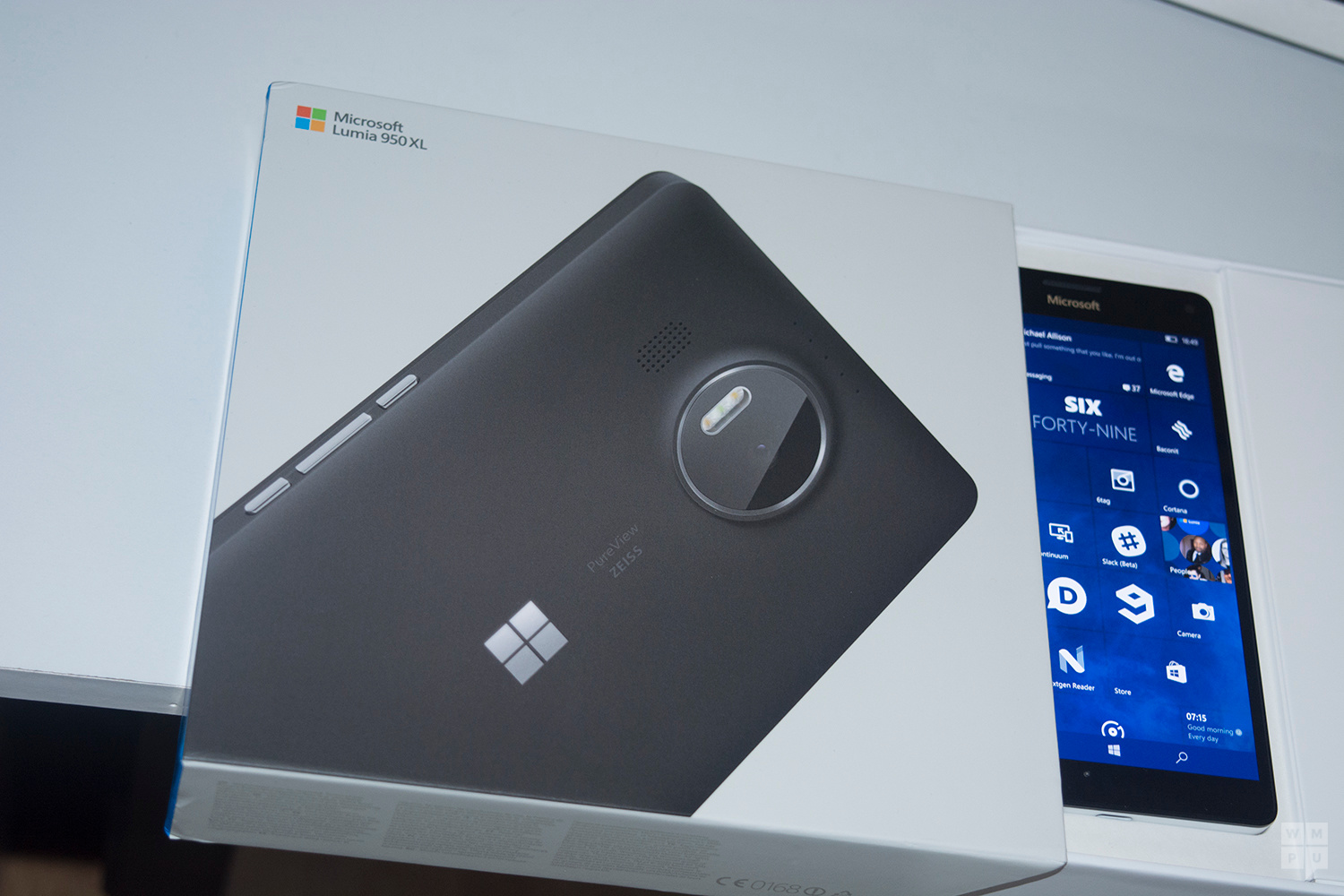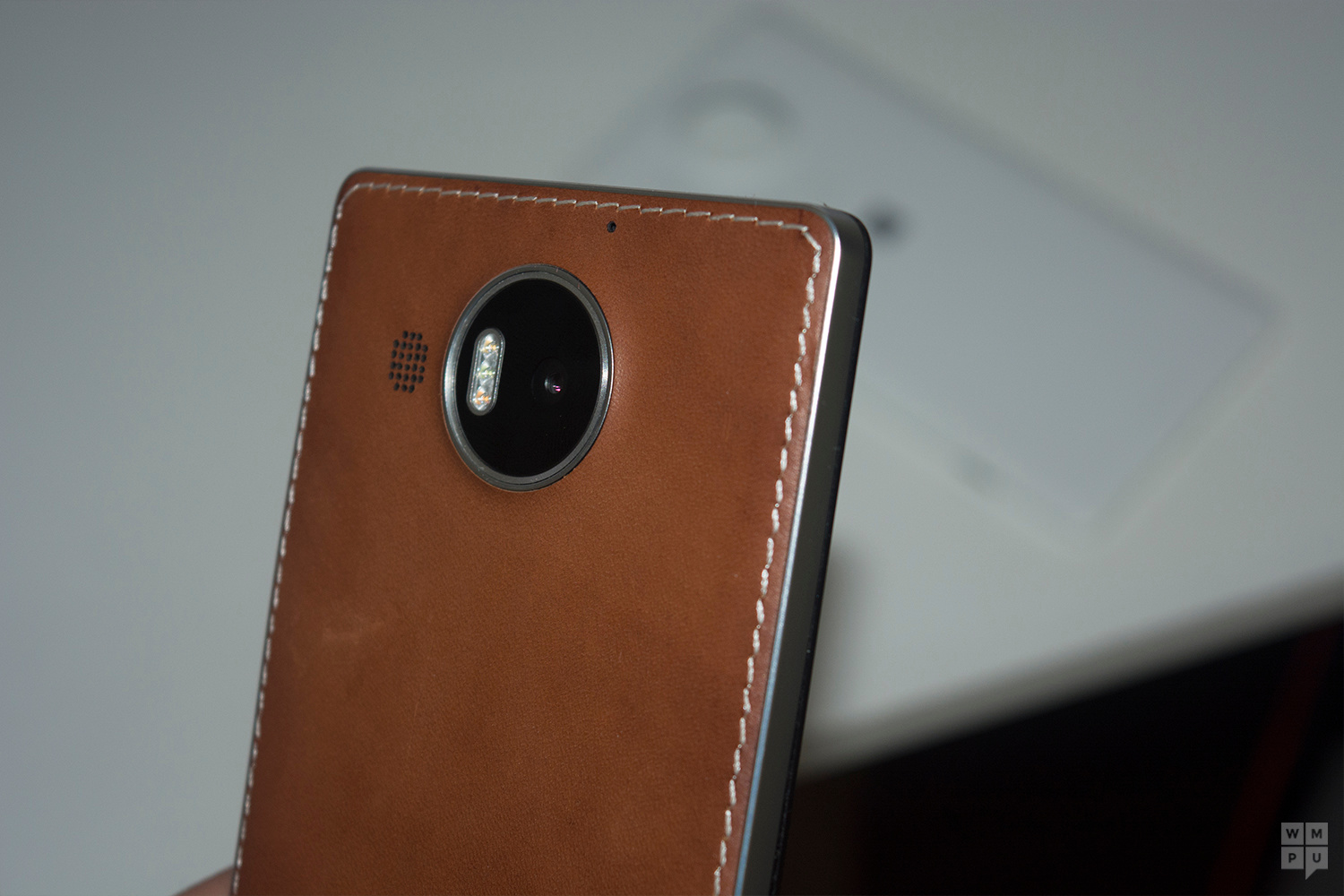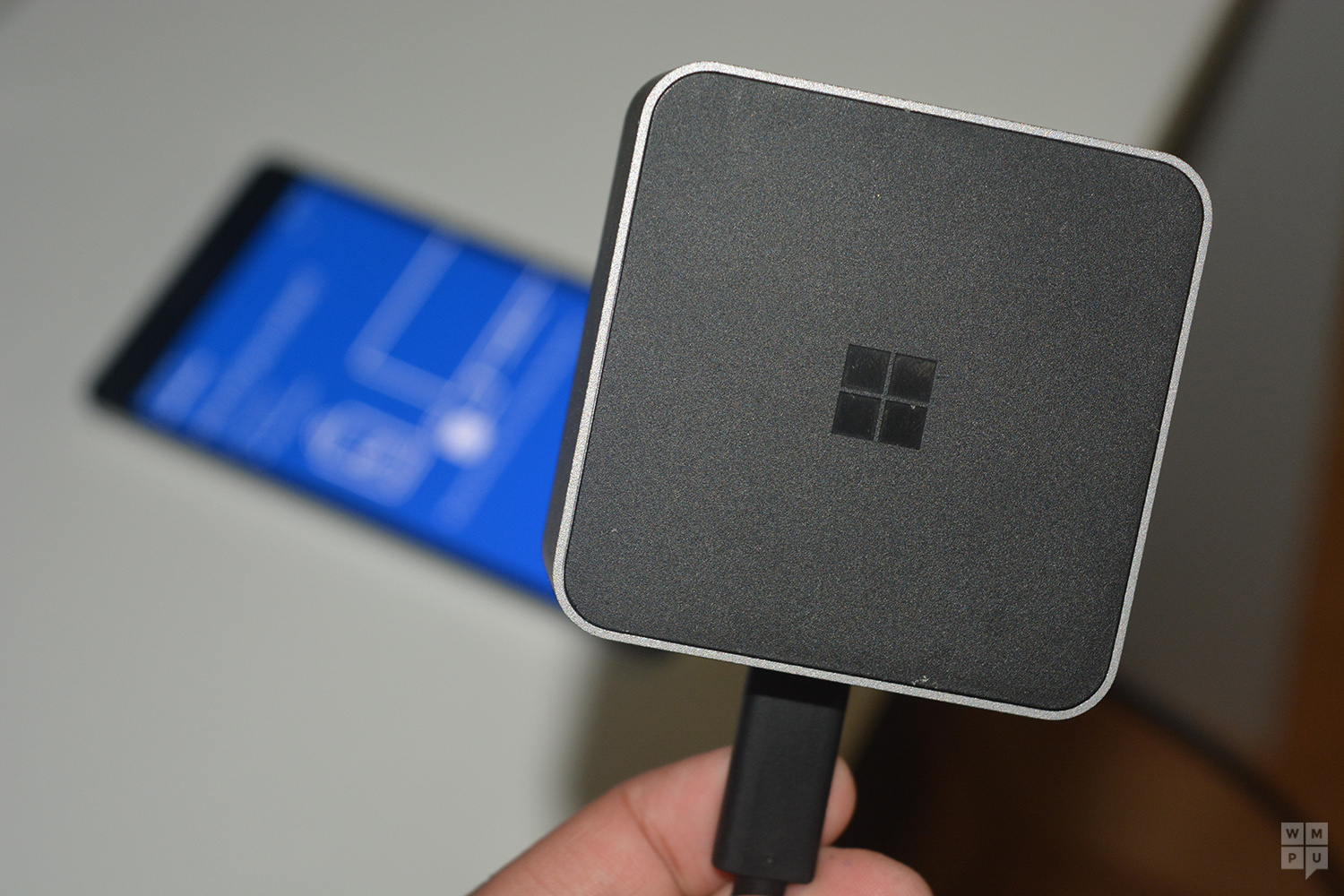Microsoft Lumia 950 XL review: Bigger, Faster, Smarter
14 min. read
Updated on
Read our disclosure page to find out how can you help MSPoweruser sustain the editorial team Read more

Table of contents
On October 2013 two years ago, Nokia announced the first two Windows Phone phablets – The Lumia 1520 and 1320. These devices came out sporting powerful processors, large beautiful screens but were crippled by Windows Phone 8. As anyone who has followed the progress of Windows Phones through the ages would know, Microsoft’s mobile phone OS started out optimized for small 4-4.5 inch devices. Once you increased the size and resolution of the OS, seams began to show through. Apps would be stretched out, there would be a lot of wasted space. Aside from that, there were a few issues with the hardware as well. While big and bold, a 6-inch screen was- and still remains – too massive for a phone that can be used at a comfortable size. The Lumia 1320 has since received a more capable successor, but the Lumia 1520 had never been updated, until now.
Microsoft’s Lumia 950 XL is the company’s latest flagship phablet and the first flagship handset developed by the Microsoft Mobile Devices Group. It is a powerful device that comes with top of the line specs, a decent design, and other niceties like Iris Scanner and Continuum.
In terms of the greater smartphone market, the Lumia 950 XL – as well as the Lumia 950 – are devices that are meant to showcase the full power of Windows 10 on Mobile as well as the evolution of smartphones. Your smartphone has evolved from a relatively small 3.5-inch device aimed at replacing your traditional feature phone, mp3 player and navigation system among others, to one which is now intent on replacing every single accessory in your life, including your PC.
What’s in the box

The Lumia 950 XL ships in the same box style as Microsoft’s previous Lumia devices with a superimposition of the device in question in the front, and a showcase of the colours at the back. The box itself is a bit larger than the box the 640 XL comes in, clearly due to their respective importance. The box itself contains a Lumia 950 XL (duh), Microsoft’s USB type-c fast charger, and a USB C to USB Type A connector – for use with legacy USB ports. If your Lumia 950 XL came with a Display Dock (either via Insider event or Lumia Offers app), you would also have another USB Type C charger, a USB C to USB C cable and the dock itself.
Design

The Lumia 950 XL makes use of the Lumia design language Microsoft introduced during the last year. It is not metal rimmed like previous Lumias, nor is it unibody metal or glass like typical smartphones in 2015, and that might be a slight problem for Microsoft. The design of the Lumia 950 or 950 XL is nice, it is perfectly solid and it is great in the hand. But, it does not lend itself very well to store displays, in the same way, the 1020, 920 and other polycarbonate flagship Lumias did. It does not immediately communicate that it is a flagship, at first, blush.
[shunno-quote]The Lumia 950 XL isn’t a piece of jewellery[/shunno-quote]
The 950 XL isn’t a piece of jewellery or whatever lifestyle tech blogs use to describe their smartphones nowadays, it is a minimal utilitarian design that gets out of the way and doesn’t draw too much attention to itself.
If you would like to jazz up your Lumia 950 XL, Microsoft has worked with Mozo to provide replacement cases for the Lumia 950, 950 XL and 550. Unlike previous flagships where you were stuck with the design and colour you purchased unless you decided to bring out the screws, you can get a different colours and material types for your Lumia easily.

Interestingly enough, one bit of the phone that is metal is the Microsoft logo on the back. Previously Microsoft’s Lumia logo was the Microsoft logo printed out alongside the full name on the back of the previous Microsoft Lumias. In Windows 10 Lumias, Microsoft is now opting to use the same metallic logo as it does for its Surface devices on the back of Lumias. As a minor note, the “Microsoft” on the faceplate of the 950 series is also shinier than the lower-priced devices. It’s slightly reminiscent of Apple’s glowing apple in terms of standing out on the body of the devices. While Panos Panay may not have been able to create the devices he wanted yet, Microsoft has clearly put his stamp on the devices.
[shunno-quote]The Lumia 950 XL feels really small, despite having a 5.7-inch screen[/shunno-quote]
One other thing I would like to draw attention to is how small the Lumia 950 XL is. While it has a 5.7-inch screen like Microsoft’s Lumia 640 XL, it is much smaller than its lower-priced sibling, which is itself smaller than Apple’s iPhone 6s Plus.
It also feels light at 165g and it is quite thin, all of which combine to make a svelte feeling device. If you think the Lumia 950 XL may be too big for you, you should go to a store and try it put first, it is much smaller than the name implies.
Display
One of the talking points of Microsoft’s flagship devices from Surface, to Lumia, to Band is the beautiful display. The Lumia 950 XL, like the Lumia 950 and the Surface devices, has a fantastic display. It may not have fancy brandings like PixelSense or Retina, but it is just very nice to look at. As is the trend with modern flagships, the Lumia 950 XL sports a 1440P AMOLED display which, paired with its 5.7-inch screen has an overall PPI ratio 518. The thing to take away from that jumble of buzzwords is that you will not see a pixel on this display unless you whip out the magnifying glass. Text and images are crisp and clear, and Windows 10’s MDL2 just shines on this display. Microsoft’s live tiles pop and flip around, and everything is gorgeous.

[shunno-quote align=”right”]The Lumia 950 XL’s display is simply beautiful[/shunno-quote]
Unlike the 950, the 950 XL comes with Gorilla Glass 4, which means it will be even more resistant to accidental scratches in the pocket from keys and coins. Just don’t expect that protection to extend to dropping your device to the ground, that’s not what GG4 is for. Aside from the sheer “wow” of the display, it is also pretty accurate in depicting colours. Blues are blue and blacks are very black. If you fancy your screen being slightly tinted warmer or cooler, Microsoft allows you to do that in display settings as well.
Performance and Battery life

In the Window Phone arena, Microsoft has this weird habit of using processors in its flagship devices that are below the standard of other flagships. The Windows Phone 8 family launches with Snapdragon S4 Pro series when other devices had Snapdragon 600s, the Lumia 930 launched with a Snapdragon 800 when the HTC One had launched with 801 and the Lumia 830 insulted the world by sporting a Snapdragon 400. Fortunately, Microsoft’s new Lumia devices have the latest and greatest tech specs as well. They are equipped with a Snapdragon 810, Qualcomm’s most powerful processor on the market, and 3 GB of RAM. With that much muscle behind it, the Lumia 950 XL runs as expected. Everything is smooth, everything flies, everything runs as expected. Even comparing the Windows Phone 8 native applications on a Lumia 1520 to the universal apps on Windows 10 showed that the Microsoft’s under the hood improvements had borne fruit.
[shunno-quote]Everything flies on the Lumia 950 XL, but the benchmark is a bit puzzling[/shunno-quote]
The puzzling side of this performance shows itself in the benchmark. The Lumia 950 XL does not showcase this blazing speed in benchmarks, however. What it does do is consistently fall behind all other devices where it should be excelling. We could argue that perhaps benchmarks are not optimized for Windows 10, but that falls back on the app gap argument and I’m not sure how good it is to use the app gap as a defence.
[shunno-quote align=”left”]The Lumia 950 XL’s battery is OK[/shunno-quote]
The battery life of the Lumia 950 XL has been a mixed bag for me. While the Lumia 950 XL packs a massive battery which should – in theory – give it similar battery life to the Lumia 1520 and 640 XL, it doesn’t come close to matching these devices in practice, often wanting to be on the charger before the day is through. I understand that my use of these devices is probably more extreme than the regular user, but I also used the Lumia 1520 ad 640 XL and got perhaps an hour or two more of battery life off them/ I’d attribute this to both Windows 10 Mobile being less battery efficient than 8.1 and the toll of the 1440p screen on the battery.
I once charged my 950 XL up to 95% and went out to a nearby town to shoot photos for this review. As I normally do, I listened to music while walking, relied on the maps app to guide my way and sometimes stopped to check my twitter. 4 hours later, my phone was at 29%. Using the third party battery sense app, I noticed that my battery had been dropping sometimes by 25% an hour. That’s not what I’d expect from a phone with a battery of this size. Especially as the phone had been in my pocket with the screen off doing nothing but playing music and navigating via voice.It seems, as like in performance, the Lumia 950 XL has a gap between how it should be performing, and how it actually is performing in real life. The battery life is good, but it should be excellent, and once more, that is an issue.
It seems, as like in performance, the Lumia 950 XL has a gap between how it should be performing, and how it actually is performing in real life. The battery life is good, but it should be excellent, and once more, that is an issue.
Camera

[shunno-quote align=”right”]The Lumia 950 XL offers a nice photo taking experience[/shunno-quote]
The Lumia 950 camera is one of the best smartphone cameras in 2015 – if not the best. It doesn’t have the outlandish 41 MP camera of the Lumia 1020 (though it does retain a camera hump). It has a 20-megapixel camera with Microsoft’s traditional PureView imaging technology and triple LED flash. Like Jace with the 950, I have really been impressed with the 950 XL’s camera with one caveat- and we’ll talk about that in a minute. But first of all, let’s discuss the camera. Since Lumia Denim, Microsoft introduced a new camera app for their Windows Phone devices, one which was capable of taking near instantaneous photos with the flexibility of Nokia Pro Camera and the added benefit of HDR in the form of rich capture. This camera app has come to Windows 10 mobile in the form of Windows Camera, and it is actually very nice to use.
Here are camera samples (note that the following images have been resized, you can find the full-res ones here):









You tap the camera, you point, and you click. One click, one photo. It is actually so fast that the first time I did it, I was confused as to whether I had actually taken a photo or not. While the camera of devices like the 1520, 930, 640 XL are all fast, there is a small delay between pressing the shutter button and actually taking the photo. That delay is all but gone on the 950 XL and it makes for a nicer photo taking experience.
Software

Windows 10 Mobile is Microsoft’s latest iteration of the Windows on phone series. It is very similar to Windows Phone 8.1, but the most visible changes in it are the user interface and experience. It is no longer the swipe-heavy Zune inspired design, it is more similar to the average smartphone design, but with the Microsoft flair. For the 950’s larger screen, this means that aps now scale up to fit the large screen as opposed to being blown up to be larger versions of themselves.

[shunno-quote align=”left”]Windows Hello is great, but not as fast as it should be[/shunno-quote]
Especially relevant to the Lumia 950 and 950 XL are support for Windows Hello and Continuum. Windows Hello is a unique take on biometric scanning. While Android manufacturers chase after Apple by implementing fingerprint readers, Microsoft is taking a different route with Iris scanning. In practice, Hello is great, but not as fast as it should be, often taking a second or two to recognise and then unlock. You don’t always need to be looking directly at the camera for Hello to unlock, all you need to do is to allow the scanner to “see(said in a tone that implies the air quotes ?)” your eyes. It also works in the dark, outdoors at night and while wearing glasses.

Continuum is the second unique feature of Windows 10 for the Lumia 950 XL. We’ve already reviewed it with the Lumia 950 so we aren’t going to go over this one again besides the basics. As you know, continuum allows you to use your phone like it was a PC, albeit a slightly limited one. You can run universal apps on a larger screen, and you can manipulate it with a mouse and a keyboard, your phone or even using the phone as a second screen for an enhance experience. It’s a nice feature and if you know its limitations, you won’t be disappointed when using it.
[shunno-quote]Windows 10 Mobile is lovely, but it needs some work[/shunno-quote]
But, and there are a few more buts we’ll explore in our full review of Windows 10 Mobile, the OS is buggy. For Windows Insiders, the insider preview you’re using right now is the same as what ships on the 950 and 950 XL, bugs and all. If you think your experience is buggy, it won’t be any better on these devices. Microsoft’s new found ability to update devices all over the world simultaneously is going to be helpful in squashing whatever bugs there are left, but right now, you may be subject to a bug or two that makes you go “ugh”.
Conclusion
The Microsoft Lumia 950 XL is a great high-end smartphone for Windows users. It is solid, powerful with a beautiful screen, has a great camera, and adequate battery life. It comes with innovations like Windows Hello and Continuum for Phones, and there are several apps for Windows 10 Mobile like Facebook, Uber, Pandora and more coming into the store every day. What will decide on whether one gets the device for many users is not the hardware, but the software.
Windows 10 Mobile is a lovely OS, but it has rough edges compared to Windows Phone 7 or 8. It is not as fluid, nor is it as well-designed. There are some bugs here, some bugs there, and not every app has been updated to a universal Windows app yet. But that’s OK.

Microsoft has been issuing monthly updates to Windows 10 Mobile via the Insider program since before it officially launched the OS, there is no doubt Microsoft will continue to improve the software and firmware with updates. In addition to that, many apps are beginning to be updated to universal Windows apps. Most of the apps I use on my phone ARE universal apps which were previously 8.1 apps. Windows developers have embraced the platform, and even third party ISVs are providing universal apps daily with more to come. Today we reported on the Wall Street Journal and the Economist, last week it was Uber and Deezer.
While Microsoft may have changed strategy with Windows Phone from being a hub based OS to an app based one, but make no mistake, it is still trying to think different. Iris scanners instead of finger print readers and Continuum are proof of that.
If you’re in the market for a Windows Phone, or you just want a phone that is powerful and a bit different from everyone else, Microsoft’s Lumia 950 XL will be just fine.
[shunno-quote]If you’re in the market for a Windows Phone, Microsoft’s Lumia 950 XL will be just fine[/shunno-quote]








User forum
1 messages